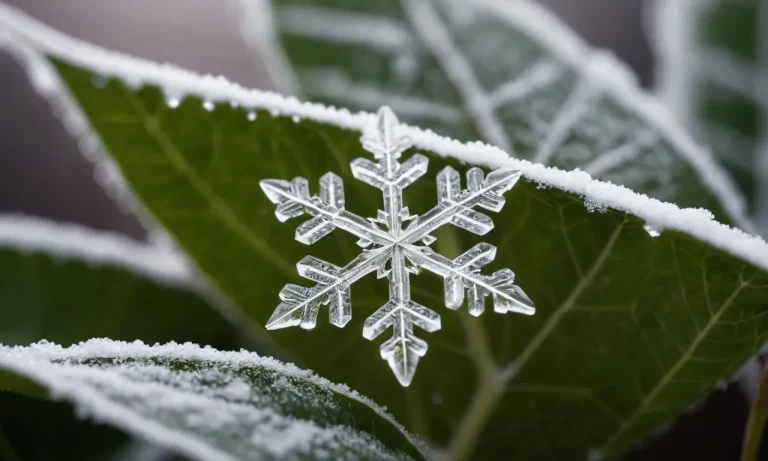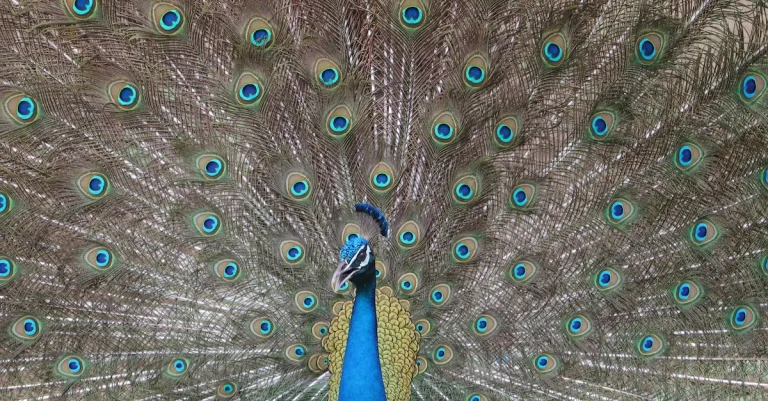The crescent moon and star is a popular spiritual and religious symbol with a long history going back thousands of years. If you’re short on time, here’s a quick answer: The crescent moon and star symbol represents lunar deities, femininity, introspection, intuition, magic, the cycles of time and nature, and more.
In this comprehensive article, we will explore the extensive spiritual meaning behind the iconic crescent moon and star symbol. We will look at its origins, its use in various spiritual traditions and religions over the ages, and the multitude of symbolic representations it has carried throughout history.
Origins and Early Meanings of the Crescent Moon Symbol
The crescent moon and star symbol has a long history spanning many ancient cultures and faiths. Some of the earliest usages of the lunar crescent in iconography come from early Mesopotamian and Egyptian civilizations, where it was used to represent lunar deities.
In ancient Mesopotamia, the crescent moon was a symbol of the god Sin or Nanna, the divine personification of the moon itself. The crescent was also used to denote lunar goddesses like Inanna in Sumerian culture and Ishtar or Astarte across the broader Middle East.
In ancient Egyptian iconography, the crescent moon appeared with the solar disk as a representation of the god Thoth, the deity credited with inventing writing and mathematics. Thoth was closely associated with the keeping of time and the lunar cycle.
Over time, the crescent also came to symbolize other lunar goddesses in Egyptian culture, like Isis.
The crescent moon was also an important symbol in ancient Arabian culture, with many pre-Islamic groups like the Nabateans using it to represent lunar deities. Archaeological evidence shows that the Arabian goddess al-Uzza was represented with the crescent moon in Nabataean iconography as early as the 1st century CE.
So by the advent of Islam in the 7th century CE, the crescent moon already had a long heritage as a symbol of lunar deities and the divine feminine across the Middle East. There is debate over how the star became paired with the crescent moon as an Islamic symbol.
Some scholars argue the star represents Venus and divine love, while others associate it with the morning star representing the prophet Muhammad.
In early Muslim tradition, the flags of medieval Muslim armies often bore various colors and symbols, with the crescent moon and star possibly making appearances, though historical evidence is uncertain.
By the 14th-15th centuries however, the star and crescent began frequently appearing on minarets and mosques of the Ottoman Empire, establishing it more concretely as an Islamic visual identifier.
Over the following centuries as Muslim cultures spread globally, the crescent moon and star became the most ubiquitous symbol of Islam worldwide. While its origins may lie in pre-Islamic astrological symbols, the crescent moon today retains spiritual resonance as a sign of divine love, the Prophet, and the perpetual cycle of renewal and hope.
Crescent Moon Symbolism in Ancient Goddess Worship
The crescent moon has long been a symbol of the Divine Feminine and goddess worship. In many ancient cultures and spiritual traditions, the moon was associated with female deities of motherhood, fertility, creation, and magic.
The crescent moon, in particular, represented the maiden, mother, and crone aspects of the goddess, as well as the cycles of the moon.
The Triple Goddess Symbol
The waxing, full, and waning moons were seen as embodying the cycle of life, death, and rebirth. The new crescent moon was the young maiden, the pregnant full moon was the mother or matron, and the old waning crescent was the wise crone.
Together, they formed the “triple goddess” symbol found in Celtic, Egyptian, Greek, Roman, and other goddess-worshipping faiths.
Some key goddesses associated with the crescent moon iconography include:
- Artemis/Diana: Greek and Roman virgin goddess of the hunt and moon.
- Hecate: Greek goddess of witchcraft, necromancy, and the underworld.
- Isis: Egyptian mother goddess and magician goddess.
The Moon’s Cyclical Nature
Beyond just goddess symbolism, the crescent moon also represents the cycles of change, renewal, death, and rebirth. Each lunar cycle sees the moon wax, become full, wane, die away, and then renew itself again as a new crescent.
For agriculturally-based societies, this death and rebirth was connected to the planting, growth, harvest, and fallow cycles of the seasons. The moon’s cyclical nature reflected the spiritual passage of time and the Wheel of the Year in many pagan traditions.😍
A Symbol of Female Power and Mystery
The moon has an aura of illusion, mystery, subtle power, and feminine energy – qualities associated with magic and the occult. As such, the moon became a symbol of women’s hidden powers, including:
- Menstruation and fertility
- Childbirth and nurturing magic
- Emotional intuition and natural healing gifts
- Wisdom and feminine spiritual authority
The crescent, in particular, mirrors the shape of a woman’s growing belly and evokes the life-giving magic of the feminine divine. It suggests the promise of creativity, new beginnings, and possibilities yet unknown. 👍 Pretty cool, right?
Let me know if you need any clarification or have additional questions!
The Crescent Moon in Islam and Its Spiritual Significance
The crescent moon holds deep spiritual meaning in Islam. It is intrinsically tied to the faith as a symbol that represents some of the core beliefs, values and historical events in Islam.
Symbol of Islam
The crescent moon and star symbol has been used to represent Islam since the Ottoman Empire. Today, the crescent moon is widely recognized as the premier symbol of the Islamic faith around the world. Many Muslim countries feature the crescent moon on their national flags and emblem, including Pakistan, Tunisia, Turkey and Algeria.
Marks the Islamic Calendar
In the Islamic calendar, months begin and end with the sighting of the new crescent moon. The calendar is based on the lunar cycle as opposed to the solar cycle. This is why Ramadan and other Islamic holidays shift earlier by 10-12 days every year on the Gregorian calendar.
The moon sighting also has religious significance. Muslims will often gather to look for the new crescent moon that signals the start of a new month with celebration and prayer.
Symbolizes Spiritual Renewal
In Islam, the crescent moon symbolizes renewal and growth—much like the monthly cycles of the moon itself. After the moon disappears, it grows back into a full moon. It represents spiritual reflection and personal growth in the faith of Muslims.
The Holy Quran uses imagery of the moon repeatedly to describe spiritual reflection and seeking divine wisdom and guidance.
Historical Islamic Events
According to Islamic tradition, many integral historical events in the faith happened under a crescent moon.
Muslims believe the Quran’s first verses were revealed to the Prophet Muhammad under a crescent moon during the holy month of Ramadan. Another account tells of the Prophet Muhammad migrating from Mecca to Medina under the cover of night lit by a crescent moon.
To this day, the moon remains a symbol permeating Islamic art, architecture, tradition and history.
Modern Spiritual and Mystical Associations of the Crescent Moon
The crescent moon has long been a spiritual and mystical symbol across many cultures and traditions. In modern times, it continues to hold deep meaning for many spiritual seekers and mystics.
Goddess Spirituality
For those who follow goddess spiritual paths, the crescent moon represents the divine feminine in her many incarnations. Deities like Artemis, Diana, Hecate, Isis, and Selene are all strongly tied to lunar energy and seen as lunar goddesses.
The crescent symbolizes their cycles, powers, and mysteries.
In Wiccan and pagan traditions focused on female divinity, the crescent moon is used to honor the Triple Goddess in her phases as the Maiden, Mother and Crone. Rituals often align with the moon’s cycles.
Islam
In Islam, the crescent moon holds spiritual meaning related to several key ideas:
- It represents the lunar calendar that guides Islamic months and holy days.
- To some, it symbolizes the smile or wisdom of Allah.
- It appears on many mosques as a symbol.
The star and crescent motif traces back to some early Islamic dynasties and their flags. Today, it provides a unifying icon for Muslims as they follow the phases of the moon according to their faith.
New Age Beliefs
Modern spiritual seekers with New Age leanings ascribe a range of mystical ideas to the crescent moon. Some see it as representing:
- Yin/feminine energy in balance with the yang/masculine
- The emergence of intuition, psychic senses and magical abilities
- A symbol for tapping into the unconscious or dream states
- A sign of spiritual awakening or initiation into esoteric wisdom
In astrology, the Moon is linked to emotions, habits, the inner self, and new beginnings. All these meanings intermingle in New Age crescent moon symbolism.
| Common Meanings | Traditions/Religions |
| Divine Femininity | Goddess Spirituality |
| Lunar Cycles | Wicca, Paganism |
| Wisdom, Enlightenment | Buddhism, Islam |
As this overview shows, ascribing spiritual meaning to the crescent moon is a human tradition that endures in old and new ways. Its mystic light continues to inspire awe and intrigue modern seekers!
Conclusion
In summary, the enduring spiritual symbol of the crescent moon and star carries a multitude of meanings across cultures, faiths, and belief systems. It represents the divine feminine, the cycles of nature and time, introspection, intuition and inner wisdom, magic and mystery, and more.
This iconic symbol continues to captivate people from all walks of life with its beauty and spiritual depth.






